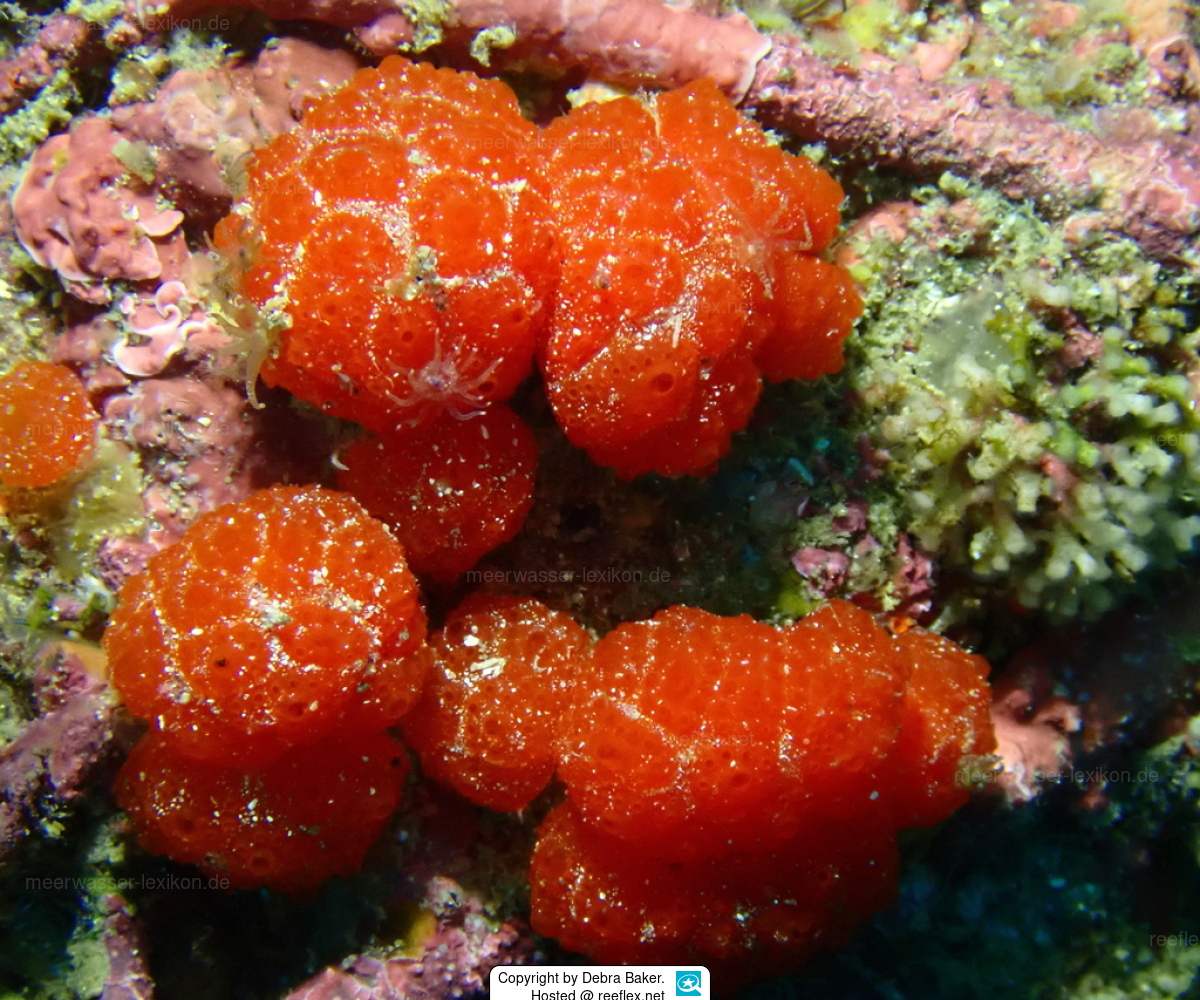Info
Synoicum kuranui was first described based on reports from Great Barrier Island, an island north of the North Island of New Zealand.
This sea squirt is particularly striking due to its bright color, an orange-reddish tone, and it confuses people who discover a snake-like, elongated structure in the water and initially identify it as a type of snake.
Synoicum kuranui typically forms sessile mushroom- or button-like colonies in areas with strong currents. These colonies are elongated and sausage-shaped and can grow up to 120 cm long.
Photos of this long sea squirt can be viewed on the website by kyliep here: www.inaturalist.org
Recreational anglers in New Zealand waters are also confused when they suddenly find a bright red, long organism on their hooks.
If you have the time and inclination, you can read the report in The New Zealand Herald, “Discovery of sea squirt in Northland creates mystery for One Tree Point residents,” and translate it with the AI deepl www.deepl.com if necessary.
It still seems unclear whether the later form is a free-swimming sea squirt or one that has been torn away from the sediment by the current.
In shallow water, the sea squirt may be free-swimming but still stuck.
Ascidians feed by filtering organisms and particles from the water, which is sucked into the gill sac through the mouth siphon and expelled again through the atrial siphon, a process accompanied by the secretion of mucus through the endostyle.
Reproduction in ascidians takes three forms:
- asexual reproduction by budding, which occurs only in some families
- division of colonies, a process observed in a few species
- sexual reproduction or mating, which occurs throughout the group
We would like to thank Debra Baker for her wonderful photo of Synoicum kuranui.
This sea squirt is particularly striking due to its bright color, an orange-reddish tone, and it confuses people who discover a snake-like, elongated structure in the water and initially identify it as a type of snake.
Synoicum kuranui typically forms sessile mushroom- or button-like colonies in areas with strong currents. These colonies are elongated and sausage-shaped and can grow up to 120 cm long.
Photos of this long sea squirt can be viewed on the website by kyliep here: www.inaturalist.org
Recreational anglers in New Zealand waters are also confused when they suddenly find a bright red, long organism on their hooks.
If you have the time and inclination, you can read the report in The New Zealand Herald, “Discovery of sea squirt in Northland creates mystery for One Tree Point residents,” and translate it with the AI deepl www.deepl.com if necessary.
It still seems unclear whether the later form is a free-swimming sea squirt or one that has been torn away from the sediment by the current.
In shallow water, the sea squirt may be free-swimming but still stuck.
Ascidians feed by filtering organisms and particles from the water, which is sucked into the gill sac through the mouth siphon and expelled again through the atrial siphon, a process accompanied by the secretion of mucus through the endostyle.
Reproduction in ascidians takes three forms:
- asexual reproduction by budding, which occurs only in some families
- division of colonies, a process observed in a few species
- sexual reproduction or mating, which occurs throughout the group
We would like to thank Debra Baker for her wonderful photo of Synoicum kuranui.







 Debra Baker
Debra Baker




